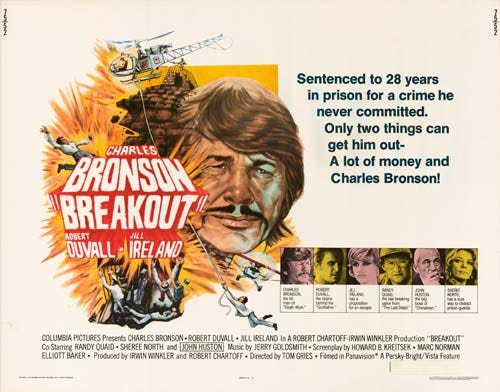The One With A Wide Release
I’ve been on the road visiting family and friends a bit over the past couple weeks so I haven’t really taken as much time to put this together as I would like. For a bit I fell into a Manson murders hole and it’s a wonder that this newsletter wasn’t consumed by it. I went through Chaos, Tom O’Neill’s new book attempting to unravel Bugliosi’s case and the entire Helter Skelter perspective, and the 12-episode You Must Remember This arc on the murders and their impact on Hollywood over a couple weeks. Otherwise, just been generally enjoying the spooky season by seeing Alien and The Exorcist on the big screen for the first time, taking in some classics at home, and catching Robert Eggers’s The Lighthouse while I was in Lexington. Otherwise, it’s all been pretty steady. Hope all is well with you.
READS

— Matt Zoller Seitz put together this concerning piece about the siloing of Fox properties following the Disney merger for Vulture in which he talks with dozens of sources about cancellations and limitations for former Fox titles in theaters around the country. “It’s sometimes hard to tell exactly what Disney’s new policy regarding back-catalogue films is, beyond generally making it more difficult to show classic 20th Century Fox movies in theaters,” he writes. This is a big deal for anyone that enjoys going to see their old favorites on the big screen because Fox boasts a vast catalog that includes things like Alien, Princess Bride, The Planet of the Apes, How To Marry A Millionaire, Miracle On 34th Street, Die Hard, Home Alone, Big, and The Sound of Music, among many, many others. Reasons floated for Disney putting these films “in the vault” vary, but mostly people believe it’s just to suck more oxygen away from any non-Disney property. Apparently the one big Fox repertory title not being locked away is the iconic midnight flick The Rocky Horror Picture Show because “maybe Disney knows that if they pull [it] too, there’ll be a full-scale audience revolt.” I guess what I’m saying is someone needs to figure out how to Ocean’s 11 this whole Disney vault situation.
— The October 6 edition of Pitchfork’s Sunday Review tackled John Mayer’s Room for Squares, an album I unabashedly loved in high school. I’ve grown away from it and I’ve definitely teased some friends for their love of Mayer, but I still have never been able to keep myself from singing along to “Why Georgia.” Marc Hogan does an incredible job of explicating the value of Mayer (and all pop we loved because it made us feel at home with ourselves in our teen years):
I’m not sure the music we loved when we were younger becomes less valuable just because we no longer need what it has to offer. Over the years, I’ve adored plenty of albums that reflect the richly varied ways we are each different, individual, weird. I listened to Room for Squares the most when I wanted to feel normal. Not “normcore”: Just normal. A little less alone; a little more accepted. “You will know what all this time was for,” Mayer promises as “No Such Thing” rings to a conclusion. I just know that expressing what’s true, for yourself or for a group of people, can make a bigger difference than anyone realizes in the moment.
— As someone who watched a bunch of the I Love The… series, I was hit square in the face by Jessica MacLeish’s Ringer piece on how it helped formulate the way we talk about pop culture now. Particularly this quote about the economy attention:
Our pop culture landscape is rife with references to other material, in the entertainment we consume and the conversations we have every day (especially online), and being able to keep up is, for better or worse, a form of currency.
— I stumble upon a “new” Helen Rosner piece once every few months. Expertly written, hilarious, and unflinching in their love of food. My all time favorite is her treatise on how chicken fingers are the perfect food for Guernica, but I just found and fell in love with “Christ in the Garden of Endless Breadsticks,” a reflection on Olive Garden and its authenticity.
— Kyle Chayka’s excellent review of the new Susan Ronald biography of Conde Nast, the man who practically invented lifestyle magazines as we know them, for the New Republic is well worth a read. It takes you through the birth of iconic cultural publications like Vogue and Vanity Fair. When trying to find a modern analog for Nast’s style of publications, Chayka places his bet on The New Yorker, a venerable and hip news source with plenty of caché and a stable of fantastic writers (the whip-smart culture commentator extraordinaire Jia Tolentino, the aforementioned fantastic Helen Rosner on food, and, one of my favorite TV critics, Emily Nussbaum among them): “Even as ad pages dwindle, print disappears, and social media absorbs more of our attention, the highest and most Condé-esque goal of glossy media is likely to survive: creating a club that you want to be part of.”
THE BIG FILM HISTORY LESSON, pt. 1
The first ever wide release in cinema history was the 1975 Charles Bronson/Robert Duvall thriller Breakout. Inspired by the true story of an escape from a Mexican prison via helicopter, the movie was one of the most widely advertised features of its era.

A campaign powered by over 17,000 radio spots helped launch the film on 1,325 screens its opening week. For context, the next highest in history at that point had been 1,100 for 1974’s The Trial of Billy Jack, a sequel to Billy Jack — the 1971 Tom Laughlin action movie. And most movies opened smaller before eventually opening up to between 500 and 600 screens at their height, the same is true of legendary hits like The Godfather, Live and Let Die, and, the eventual template for the modern blockbuster, Jaws.
Jaws only ever got up to around 700 screens though its earnings ($260M domestically) far outstripped that of Breakout, which didn’t even crack the top 10 grosses of 1975.
It’s wild that twice as many theaters across the country showed Breakout, but Jaws absolutely ate it up at the box office.
Between the two of them, with the force of advertising machinery and sheer scale of the Bronson helicopter flick and the unbridled success of Spielberg’s shark thriller, the two movies helped to invent the “saturated release” method of movie booking that’s become commonplace in our current cultural market, especially with the proliferation of theater chains and the slow fade of independent and arthouse cinemas.
Movies now regularly open up across the country simultaneously on between 2,000 and 3,000 screens, with superheroes galloping across space and time to the tune of millions upon millions of dollars for wide release successes.
That old dividing line of 600 screens has stuck. Anything on fewer screens is a limited release. It’s these films that, normally, end up on awards lists at the end of the year. My relationship with limited releases is a contentious one and I’ll likely unravel it in the next post.
TUNES
What’s that? Two of the songwriters (Matt Berninger, of The National, and Phoebe Bridgers, an incredible songwriter who is also in boygenius and Better Oblivion Community Center) that can most easily break my heart have teamed up for a song? I demand a whole album of this sad, sad stuff….even if I just end up crying to it.
Polachek was breaking hearts years ago as the lead singer of Chairlift but her new solo album, Pang, is straight out of my dreams. Ethereal, perfect pop. The kaleidoscopic video really does it for me, as well.
I find it hard not to be impressed with Steve Lacy. Now only 21, he has production and songwriting credits on Kendrick’s DAMN. and multiple collaborations with Vampire Weekend on their latest record, Father of the Bride. That’s not to mention his outstanding guitar work in alt-R&B collective The Internet. His solo record, Apollo XXI, which dropped in May, is a treasure trove of lo-fi pop, R&B, and hip-hop and “Playground,” which just got a video last week, is one of the most fun cuts.
Omni, a trio of Atlanta boys, has been making jagged, bouncy post-punk for a few years now. Their third record, Networker, drops this Friday on Sub Pop and it’s really damn good. I was lucky enough to catch them in Lexington at the Green Lantern last Thursday. These dudes are the real deal.
Frances Quinlan, the lead singer of Hop Along, is dropping a solo record, the first under her own name, in January. This first single is adventurous, sweet, absolutely doused with synths, and, like many things Quinlan writes, highly affecting.
If you dug this, please share. And if you’re interested in talking with me about anything, hit me up on Twitter @doperle or just reply to this email.


